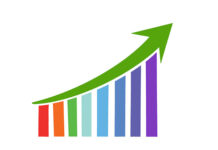HEAVY SHORT TERM, ENCOURAGING LONG TERM
Last week turned out to be notably calm on the sugar market, suggesting that the investors are tapping into opportunities in other sectors, like on the cocoa and coffee markets. Sugar, despite some fluctuations, closed out Friday almost unchanged compared to the previous week. The contract for May/2024 closed Friday’s trading floor at 21.94 cents per pound, registering a slight increase of just 8 points over the week. For the futures contracts, ranging from July/2024 to October/2026, a slightly negative average fluctuation of 8 points was seen.
The funds, according to the COT (Commitment of Trades), report of the principals, released this Friday by the CFTC (Commodity Futures Trading Commission), based on last Tuesday’s positions, shows that the funds are long by 54,702 lots, equivalent to 2.8 million tons of sugar.
In the week under analysis, the speculative funds increased their positions on the sugar futures market in New York, purchasing a total of 12,435 lots. During this period, the sugar price fluctuated very little: 22.39 cents per pound on Tuesday, March 26, and slightly dropped to 22.22 cents per pound on the next Tuesday. This increase in their longs by the speculative funds was totally compensated for by the hedgers, which means that there was no meaningful pressure on the market prices.
In addition, the appreciation of the dollar against the Brazilian real, reaching R$5.0921, triggered the intervention of the Central Bank. This setting, together with the favorable conditions offered by the forward dollar contracts encouraged the Brazilian mills to speed up the fixation of their export sugar fixing prices, obtaining better prices in real per ton for their sugar on the international market.
This fact mitigates the discussion that went on a few weeks ago about whether the return of the speculative funds to the sugar market would drive the prices to higher levels. Contrary to these expectations, the entry of the funds didn’t alter the price trend significantly. Therefore, it seems that just climate factors have the potential to increase sugar prices beyond the 23-34 cents per pound range.
The environment of the sector is worsened by the increasing geopolitical tensions between Russia, Ukraine, Israel, Iran and the United States, jeopardizing the stability of the oil prices, which this week suffered a worrisome fluctuation of more than 4%. This instability, together with the much talked about devaluation of the real against the dollar, causes a critical distortion in gas price, going beyond the alarming range of 20% and harming the sugar-alcohol sector. However, Lula, in an obstinate attitude and full of economic populism, especially in an election period, is bent on interfering in Petrobras to avoid the necessary adjustment of fuel prices at all costs, replicating the questionable practices of its predecessor. In Brasília, only the flies change.
In the midst of an endless cycle of plain populism, Brazil is distancing itself from foreign investments and strengthening its reputation as a “Banana Republic”. In an era where Artificial Intelligence redefines frontiers of the human knowledge, we are obliged to live with a narcotic analogic ignorance in the hallways of power, an unprecedented situation of ineptitude which deeply smears the image of the country.
Going back to the discussion about the sugar sector, my view for the medium and long terms is undeniably optimistic. Let’s look at the facts: we can see a steady growth in the per capita consumption of sugar in the major Asian countries, except for China. These countries, besides going through a population increase, are experiencing a sharp increase in their income levels. Let’s take Indonesia, Pakistan and Bangladesh for instance, which together add up to almost 800 million inhabitants. The economies of Indonesia and Pakistan are projected to expand by 5.0% and 5.6%, respectively, while Bangladesh has been reaching remarkable milestones in absolute poverty eradication, measured by the World Bank as how to live on less than $1.90 per day.
Namely, Bangladesh has seen a meaningful progress in its clothing sector, which has become one of the major sources of the country’s export and job creation. This setting, characterized by a robust population growth, substantial income improvement, and a per capita consumption on the rise, places Asia as a pillar for the sugar market for many years. And not to mention the transformative potential that the progress in the African continent can represent.
—
Registrations for the in-person course The Intelligence of Ethanol Trading on the Fuel Market, offered by Archer Education and brilliantly given by Tarcilo Rodrigues, from BioAgência, are still open. This course has been designed for professionals looking to understand more about the ethanol market and its links to other fuel chains, learning about the major pricing points. The course is in person and will be held on May 21 and 22 in São Paulo. Email priscilla@archereducation.com.
You all have a great weekend
To read the previous episodes of World Sugar Market – Weekly Comment, click here
To get in touch with Mr. Arnaldo, write on arnaldo@archerconsulting.com.br












